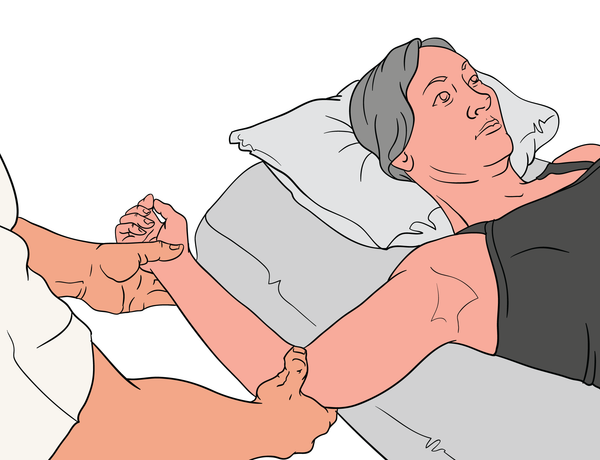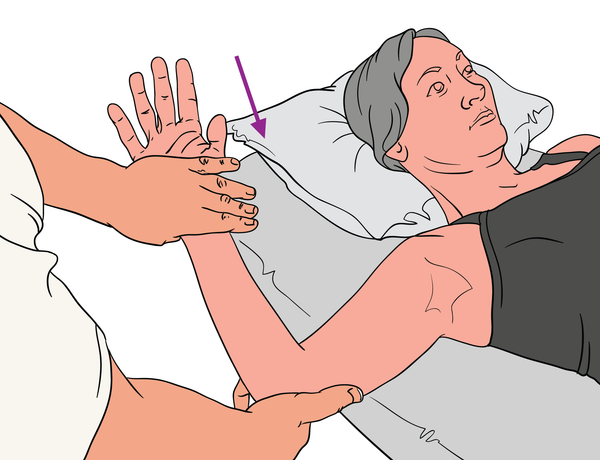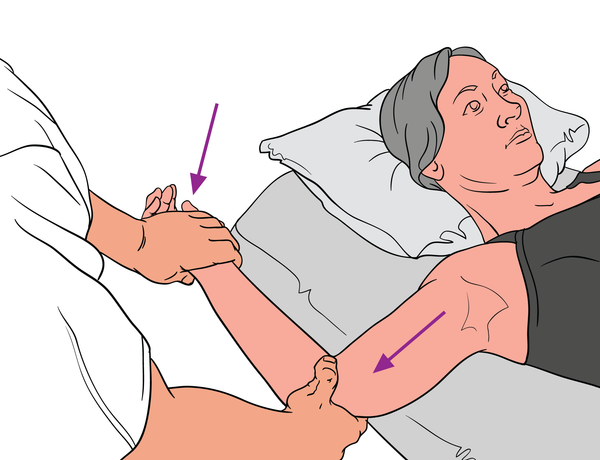Muscle Energy Techniques - Treating Subscapularis
Trigger Points in Subscapularis - it's important to include stretching as part of treatment. MET's may be effective (see below).
Studies have shown that a combination of compression, stretching and Muscle Energy Techniques (MET's) are likely to produce better outcomes when treating trigger points, as compared to compression techniques alone
The term MET was first described in 1948 by Fred Mitchell, Sr., D.O. and MET's are today quite commonly used to treat somatic dysfunction, especially decreased range of motion, muscular hypertonicity, and pain.
MET's are both effective and easy to learn
A large body of work has emerged over the last decade to support the use of MET's, specifically as part of an integrated approach to the treatment of trigger points.
Much credit needs to go to Leon Chaitow for his voluminous works on the subject of MET's, and to John Gibbons whose main work on the subject of MET's forms the core text of the MET master course (and whose example we use below).
The use of MET's has increased exponentially in recent years because they are effective, and simple to learn.
MET's are included in many NAT trigger point treatment protocols and we continue to share data and experience with therapists worldwide.

MET treatment of the subscapularis – PIR method. Position of bind of the subscapularis
MET Treatment of Subscapularis (Post-Isometric Relaxation - PIR - Method)
In this example, the therapist takes the client's shoulder into external rotation until a bind is felt.
From the position of bind, the client is asked to contract the subscapularis by internally rotating their shoulder.
After 10 seconds and on the relaxation phase, the therapist applies traction to the shoulder joint (to prevent an impingement) and slowly encourages the shoulder into further external rotation.

The patient internally rotates the shoulder to activate the subscapularis

After the contraction of the subscapularis, the therapist applies traction to the humerus and encourages further external rotation
Reciprocal inhibition (RI) Method
If the patient has discomfort activating the subscapularis, the antagonistic muscle of the infraspinatus can be activated instead.
From the position of bind, the client is asked to resist external rotation; this will contract the infraspinatus and allow the subscapularis to relax through RI.
On the relaxation phase, a lengthening procedure of the subscapularis can then be performed.
Find a Trigger Point Professional in your area
Dry Needling for Trigger Points
This trigger point therapy blog is intended to be used for information purposes only and is not intended to be used for medical diagnosis or treatment or to substitute for a medical diagnosis and/or treatment rendered or prescribed by a physician or competent healthcare professional. This information is designed as educational material, but should not be taken as a recommendation for treatment of any particular person or patient. Always consult your physician if you think you need treatment or if you feel unwell.
Disclaimer
The information in this article is intended for educational purposes within the context of continuing education for massage therapists, continuing education for athletic trainers, continuing education for physical therapists, continuing education for chiropractors, and continuing education for rehabilitation professionals. It is not a substitute for medical advice, diagnosis, or treatment. Although every effort has been made to ensure accuracy and reflect current understanding at the time of publication, practitioners must always work within the legal scope of their professional practice and follow all regional regulatory guidelines.
Hands-on techniques and clinical applications described in this material should only be performed by appropriately trained and licensed professionals. Individuals experiencing pain or symptoms should be referred to a qualified healthcare provider for assessment. Niel Asher Education is not responsible for any injury, loss, or damage resulting from the use or misuse of the information provided in this content.

Continuing Professional Education
Looking for Massage Therapy CEUs, PT and ATC continuing education, chiropractic CE, or advanced manual therapy training? Explore our evidence-based online courses designed for hands-on professionals.



















